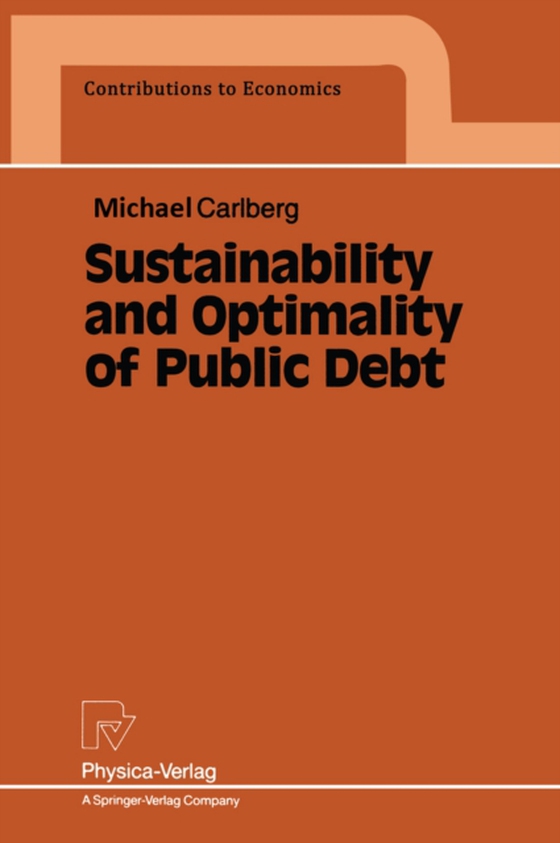
Sustainability and Optimality of Public Debt e-bog
865,79 DKK
(ekskl. moms 692,63 DKK)
Public debt seems to be one of the great issues of the nineties. The United States have turned from the largest creditor of the world to the largest debtor, due to dramatic budget deficits. The European Union tries to build dams against the flood, see the treaty of Maastricht. And in Germany, public debt tends to explo- de, doubling within a few years. The reason for this is the immense cost of...
E-bog
865,79 DKK
Forlag
Physica
Udgivet
6 december 2012
Genrer
Economic growth
Sprog
English
Format
pdf
Beskyttelse
LCP
ISBN
9783642469657
Public debt seems to be one of the great issues of the nineties. The United States have turned from the largest creditor of the world to the largest debtor, due to dramatic budget deficits. The European Union tries to build dams against the flood, see the treaty of Maastricht. And in Germany, public debt tends to explo- de, doubling within a few years. The reason for this is the immense cost of Ger- man unification. I had many helpful talks with my colleague Michael Schmid (now at Bam- berg). In addition, Michael Brauninger and Philipp Lichtenauer carefully discus- sed with me all parts of the manuscript. Last but not least, Doris Ehrich typed the manuscript as excellently as ever. I would like to thank all of them. Contents INTRODUCTION 3 5 BRIEF SURVEY OF THE LITERATURE PART I. CLOSED ECONOMY 9 CHAPTER I. SOLOW MODEL 11 1. Fixed Deficit Ratio 11 1. 1. Simple Model 11 1. 2. Short-Run Equilibrium 12 1. 3. Long-Run Equilibrium 14 1. 4. Optimal Deficit Ratio 18 1. 5. Optimal Saving Ratio 20 1. 6. Stability 21 1. 7. Shocks 23 1. 8. Budget Surplus 29 1. 9. Numerical Example 32 1. 10. Summary 37 2. Fixed Tax Rate 38 2. 1. Simple Model 38 2. 2. Short-Run Equilibrium 39 2. 3. Long-Run Equilibrium 40 2. 4. Stability 45 2. 5. Shocks 48 2. 6. Optimal Tax Rate 56 2. 7. Optimal Saving Ratio 57 2. 8. Numerical Example 58 2. 9.
 Dansk
Dansk

